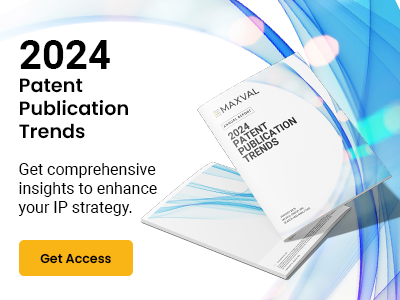The United States Patent and Trademark Office (USPTO) has released its final provisions pertaining to reduction of Patent Term Adjustment (PTA) under certain circumstances in view of the Federal Circuit decision in Supernus (Supernus Pharm., Inc. v. Iancu, 913 F.3d 1351 (Fed. Cir. 2019)).
PTA allows for day-for-day credits to the normal patent term based on delays in prosecution at the United States Patent and Trademark Office (USPTO). As a result, the term of the patent can be extended beyond the standard 20-year term by compensating for the USPTO delays in patent prosecution that can unfairly cut down the life of the patent. Any USPTO delay that occurs during the prosecution of an application is offset by delays caused by the applicants.
The USPTO has now released the revised rules to Patent Term Adjustment (PTA) practice in view of the Federal Circuit’s Supernus decision. Under these provisions, the reduction of PTA due to applicant delays must be for the period from the beginning to the end of the applicant’s failure to engage in reasonable efforts to conclude prosecution.
The changes in this final rule will apply to applications eligible for Patent Term Adjustment (PTA) in which a notice of allowance was mailed on or after July 16, 2020. As a result 37 CFR 1.704(c)(2), (3), (6), (9), and (10) have been revised and the applicant delays under these circumstances will now be calculated as described below to exclude periods corresponding to the consequences to the USPTO of the applicant’s failure to engage in reasonable efforts to conclude prosecution.
- Deferral of issuance of patent: The end date considered for calculation will be the earlier of the date of filing a request to terminate the deferral or the issue date.
- Abandonment or late payment of issue fee: The end date considered for calculation will change from the mail date of the decision reviving the application to the filing date of a grantable petition to revive the application.
- Preliminary amendment less than one month before an office action that requires a supplemental office action: The period will now be calculated from the day after 8 months from the filing date to the filing date of the amendment.
- Amendment after a PTAB decision less than one month before an office action that requires a supplemental office action: The period will now be calculated from the day after the PTAB decision to the filing date of the amendment.
- After-allowance amendment: The period will now be calculated from the day after the NOA to the filing date of the amendment. This section will now also exclude amendments expressly requested by the USPTO.
The PTO automatically grants adjustments, but patentees can petition to recalculate the adjustment if they disagree with the PTO’s calculation. PTA calculations may seem simple and are under utilized, but in our experience, there have been several instances where there is a mismatch between the PTO’s calculation and correct PTA. An increase in the term of the patent can significantly add value to the owner. This is particularly true for certain technology areas. For example, a pharmaceutical giant that can prolong drug exclusivity or a technology company generating licensing revenue can add several million in profits based on the additional patent term. In one example, we were able to add over 600 days to the life of the patent based on a recalculation.
As a result of the court ruling and new USPTO rules, it may be possible to identify additional PTA days under certain special circumstances. In an example case that we reviewed the application went abandoned on December 12, 2019, a petition to revive was filed on January 16, 2020, and the decision to revive was mailed on April 6, 2020. Under the old rules the applicant delay would be calculated as 117 days. Using the new rules the applicant delay would only be 36 days resulting in 81 extra days of PTA. It remains to be seen if the implementation of these new rules results in potential discrepancies in PTA calculations in the near future.
| MaxVal has extensive experience in helping our clients secure the longest possible patent terms. MaxVal offers a systematic review of the USPTO’s PTA calculation powered by our Patent Term Adjustment service. We review all of the events in prosecution to determine the correct PTA. A report is provided detailing our calculation and comparing it to the PTO’s calculation. We can also draft petitions for Patent Term Adjustment if additional PTA is found. Contact us to know more about PTA services. |
[pdf-embedder url=”https://www.maxval.com/wp-content/uploads/2020/07/Marked-Up-Version-of-the-Final-Rules.pdf”]




